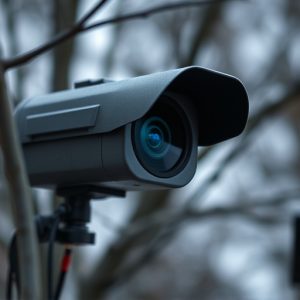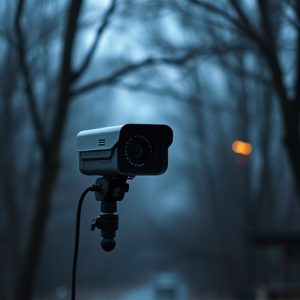Master Undetectable Placement of Wireless Security Cameras
Wireless surveillance systems, especially undetectable wireless security cameras, have transformed s…….
Wireless surveillance systems, especially undetectable wireless security cameras, have transformed security by offering remote access and minimal infrastructure needs. These cameras transmit video/audio wirelessly via RF or Wi-Fi to a central receiver or cloud platform accessible anywhere with an internet connection. Effective deployment requires understanding signal range and quality, considering factors like line of sight, obstructions, and interference. Advanced undetectable models feature stealthy design for robust security without visual detection. Placement tactics include blending cameras into surroundings using objects like fake rocks or potted plants, mounting them on ceilings or behind picture frames, and using infrared technology for night-time surveillance. Modern solutions leverage frequency hopping signals and AI algorithms to enhance location detection accuracy and counter advanced undetectable camera challenges.
“Uncover the art of wireless surveillance with our comprehensive guide on location detection. In an era where privacy is paramount, understanding how to employ undetectable wireless security cameras is essential. This article illuminates the basic functioning of these devices and delves into advanced strategies for discreet placement.
From choosing the right spots to employing cutting-edge techniques, we provide valuable tips to help you stay ahead in the world of wireless surveillance, ensuring efficient location detection prevention.”
- Understanding Wireless Surveillance Equipment: Unveiling the Basics
- Strategies for Undetectable Placement: Tips and Tricks for Discretion
- Advanced Techniques to Ensure Efficient Location Detection Prevention
Understanding Wireless Surveillance Equipment: Unveiling the Basics
Wireless surveillance equipment, including undetectable wireless security cameras, has transformed home and business security by offering remote monitoring capabilities with minimal physical infrastructure. These devices transmit video and audio data wirelessly to a central receiver or cloud-based platform, allowing users to access live feeds from anywhere with an internet connection. Understanding the basic components and functioning of these systems is crucial for effective deployment and location detection.
One key aspect is signal range and quality. Wireless cameras use radio frequency (RF) or Wi-Fi signals to transmit data, so ensuring a strong, stable connection involves considering factors like line of sight, obstructions, and interference from other devices. Location detection techniques leverage these signals, using triangulation or signal strength measurements to pinpoint the camera’s position. Additionally, advanced undetectable models employ stealthy design features, such as compact size, subtle appearance, and low-power operation, making them harder to detect visually while still providing robust security solutions.
Strategies for Undetectable Placement: Tips and Tricks for Discretion
To achieve undetectable placement of wireless security cameras, consider innovative strategies that blend seamlessly into their surroundings. One effective trick is to utilize common household objects as camera enclosures. For instance, placing a camera inside a fake rock or potted plant can make it nearly impossible to detect. These objects provide both camouflage and protection from the elements. Additionally, mounting cameras on ceilings or behind pictures frames allows for unobtrusive observation without drawing attention.
Another tip involves employing infrared technology, which is ideal for night-time surveillance. Infrared cameras are less likely to be noticed compared to visible-light cameras, making them perfect for undetectable placement. Furthermore, positioning cameras at angles that capture only specific areas can enhance discretion. By focusing on key points without recording entire spaces, the presence of a camera becomes far less apparent. These strategies, when implemented correctly, enable the installation of wireless security cameras without compromising privacy or aesthetics.
Advanced Techniques to Ensure Efficient Location Detection Prevention
In the realm of wireless surveillance, ensuring effective location detection prevention has evolved beyond traditional methods. Modern techniques employ advanced strategies to counter growing threats posed by undetectable wireless security cameras. One key approach involves utilizing frequency hopping signals, which rapidly shift transmission channels, making it exceedingly difficult for potential intruders to lock onto and track the camera’s signal.
Additionally, integrating artificial intelligence (AI) algorithms enhances location detection accuracy. AI-powered systems can analyze vast amounts of data from multiple sensors, learning patterns to distinguish genuine camera movements from false positives. This level of sophistication ensures that even the most sophisticated undetectable wireless security cameras are not immune to effective prevention measures.
Wireless surveillance equipment, while offering convenience, can be a double-edged sword. To maintain privacy and security, understanding how to place them discreetly is essential. By employing strategies like signal manipulation, directional antennas, and frequency hopping, undetectable wireless security cameras can be deployed. However, advanced techniques also exist to counter such measures, emphasizing the ongoing arms race in location detection prevention. Staying informed about these trends ensures you’re prepared for both installation and defense.


